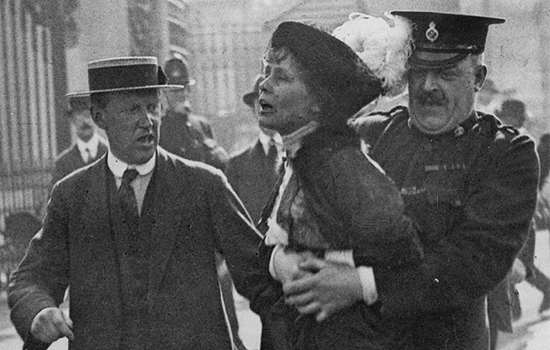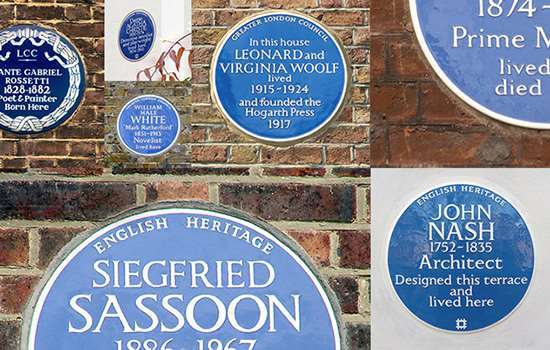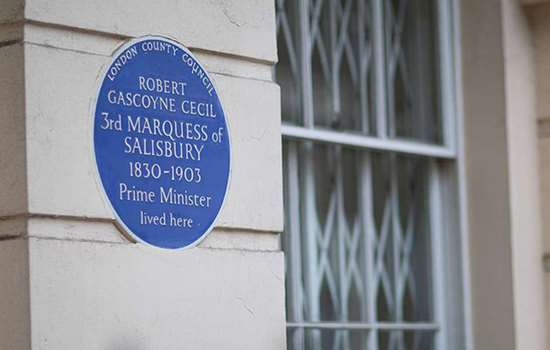WALLIS, Thomas (1872–1953)
Plaque erected in 2024 by English Heritage at Victoria Coach Station, 15 Elizabeth Street, London, SW1W 9RH, City of Westminster
All images © English Heritage
Profession
Architect
Category
Architecture and Building
Inscription
The firm headed by THOMAS WALLIS 1872–1953 Architect designed this building and was based here 1933–1946
Material
Ceramic
Thomas Wallis was an architect whose firm transformed design for industry and transport. He is commemorated with a blue plaque at Victoria Coach Station, which he designed, and where the Wallis, Gilbert and Partners’ offices were located.
Thomas Wallis was born in West Norwood on 27 May 1872. His early education and working life are unclear but aged 18 he was recorded in the census as a grocer’s assistant.
From the late 1880s, Wallis worked for architect Sidney Robert James Smith, whose firm designed the Tate Gallery during Wallis’s tenure. Wallis married his cousin, Edith Elizabeth, in 1899 and they moved to Streatham. In 1900 Wallis was elected a member of the Society of Architects and opened a private practice in offices beside Smith’s.
Early architectural practice
Between 1905 and 1913, Wallis collaborated with James Albert Bowden, and they entered architectural competitions to design public buildings. From 1901 to 1916 Wallis also worked for HM Office of Works and Public Buildings as a draughtsman and then as an architectural assistant first class. He worked on munitions factories and gained experience in designing for industry, which shaped his later designs for industrial buildings.
In 1916 Wallis moved his practice to Westminster and established Wallis, Gilbert and Partner (later Partners). ‘Gilbert’ was likely an invention; his identity has never been established. Wallis collaborated with the American firm Trussed Concrete Steel Limited (Truscon), a relationship that continued into the 1920s. Wallis, Gilbert and Partners also developed work independently and grew rapidly in the interwar years, undertaking varied projects including schools, garages, warehouses, offices and private houses. Wallis’s son Douglas qualified at the Architectural Association and joined the practice in 1927.
Victoria Coach Station
Notable interwar projects include, among others, the first purpose-built recording studios in the world at Abbey Road, St John’s Wood (1930–31), and Victoria Coach Station for London Coastal Coaches (1932).
Victoria Coach Station is now a Grade II-listed building whose tower is recognised for its distinctive art deco style. When it opened, it had parking and loading space for 76 vehicles, maintenance areas, and passengers’ facilities including a booking hall, shops and refreshment spaces. There was a 200-seat restaurant with a dance floor, painted pale green and pink with a gold spray. The concrete of the central tower was reportedly made by combining cement with recycled coloured glass and was admired for its beauty and strength.
In addition to the offices for London Coastal Coaches, there were private offices on the upper floors; Wallis, Gilbert and Partners was based there from 1933 until Wallis’s retirement in 1946. Other residents of these upper floor offices included the architect Wells Coates, decorators Mollo and Egan, and the Inland Revenue.
Design for industry
Industrial buildings represent over two-thirds of Wallis, Gilbert and Partners’ interwar output and its factory buildings are those for which Wallis remains best known. Wallis was a notable advocate of workplace improvements. He sought to understand production and workforce needs, devising efficient and adaptable buildings with amenities for staff: the staff restaurant, where a good meal could be got for a shilling, was a notable feature of his Victoria Coach Station.
Wallis considered the symbolic potential of buildings and saw a striking facade as free advertising for a business and its goods. This is reflected in the firm’s so-called ‘fancy’ factories of 1927–35, which had coloured glazed ceramic decoration and Egyptian styling.
Designs of the 1920s and 1930s include the iconic Hoover Factory (1932–5) at Perivale, described by Historic England as ‘possibly the most significant arterial road factory of its date’, the Firestone Factory (1928) in Brentford, and industrial buildings for Wrigley’s chewing gum (1927), EMI (1927–9), Glaxo (1935), Hayes Cocoa Limited (1932) and Coty Cosmetics (1932).
Modernising the transport network
Transport was another notable area of work for Wallis’s practice through the 1930s. His firm completed modernist bus garages for the new London Passenger Transport Board (London Transport) under the patronage of Frank Pick, including those at Hertford, Hemel Hempstead, Amersham and Tring (1935), Staines, Addlestone and Tunbridge Wells (1936), and St Albans and Northfleet (1937).
These garages are considerably less well known than Charles Holden’s London Underground stations of the 1930s but like those stations they made a notable contribution to Pick’s vision for a modern transport network for London, unified through design.
Professional recognition
Wallis was one of four vice-presidents of the Society of Architects before its merger with the Royal Institute of British Architects (RIBA) in 1925, of which he became a Fellow.
Among his contemporaries, Wallis’s designs were controversial and his approach to architecture considered unconventional, though he was acknowledged for revolutionising how architects considered workers.
His firm’s work was reassessed around 1980, when the Firestone Factory was hastily demolished before it could be listed, and it is now recognised for its contribution to industrial and transport design.
Wallis, who lived latterly on Putney Heath in a house designed by his own practice, retired in 1946. Following Edith’s death in 1947, he married Doris Rudland, his former secretary, with whom he had apparently lived since before the war. He died on 4 May 1953.


